Local blast wave interaction with tire structure
2020-06-28PaweBaranowskiJerzyMaachowskiukaszMazurkiewicz
Paweł Baranowski, Jerzy Małachowski, Łukasz Mazurkiewicz
Faculty of Mechanical Engineering, Military University of Technology, Department of Mechanics and Applied Computer Science, Gen. Sylwester Kaliski Street, 00-908 Warsaw, Poland
Keywords:Blast wave Tire structure Finite element analysis Optimization
ABSTRACT The paper presents modelling and simulation of a local blast wave interaction with a tire of a logistic truck supporting military operations. In the military industry, it is desired to improve effectiveness and strength of vehicle components and simultaneously to minimize the risk of crew injuries.Therefore,the main goal of this paper is to present an attempt to improve blast resistance of a tire. Based on the developed, verified and validated finite element model an optimization procedure was conducted to minimize the damage of a tire subjected to a blast wave.The main issue in the performed computations was to estimate an influence of the cords angle in each layer.For this purpose,a pre-processor script was developed in order to easily modify the finite element model so that the generation process was performed automatically on the basis of optimization variables.Dynamic response of a tire subjected to blast wave in different cases (cords configurations) was analyzed. It was shown that the optimized cords angles configuration reduces tire local damage and increases its blast resistance.
1. Introduction
The paper relates to the events where high explosives are commonly used. In many cases the blast wave can cause serious injuries of people and unfortunately these injures are very often deadly.It shows that there is a need to increase the blast resistance of structures which are exposed to explosion. Therefore, an application of various protective shields was found to be very effective.The main goal of them is to minimize the blast energy as much as possible [1-9]. In the military industry, it is desired to improve effectiveness and strength of vehicle components and simultaneously to minimize the risk of crew injuries.The explosions under vehicle can destroy wheels or even the whole suspension system resulting in an immobilization of the vehicle(Fig.1).Therefore,the presented study is focused on an attempt to improve blast resistance of a tire by modifying its interior properties.At first glance a tire does not resemble a composite. However, it is a very complex structure consisting of rubber parts (tread, sidewall, etc.), which can be considered as the matrix. Additionally, it is reinforced with cords, which, depending on tire application, can be made of different materials: nylon, polyester or steel and can have various configurations.Immersed with different orientations in the rubber parts,they form a special ring-like laminate [10-15].
Development of a pneumatic tire with a high operating standard is associated with a series of experimental studies and numerical simulations to determine stability and reliability of its implementation. It also involves large financial costs and time constraints. Scientists have conducted tire (wheel) testing under different load conditions. In Ref. [14] the measurement of force acting on the tire surface is shown which is a result of low-profile tire tread slipping. In Ref. [16] the numerical and experimental study of high explosive (HE) explosion under an armored vehicle(LAV) is presented, the mesh topology influence on the obtained results is also discussed.
Finite element analysis (FEA) is also adopted in tire industry which enables estimation of deformation and stress state analysis in a tire and to perform necessary design modifications,even before the production stage. Thus, for effective and correct analyses, a precise numerical model of tire should be developed[10,11,13,14,17,18]. It was shown that the final form and characteristics of a developed finite element(FE)model of a tire is affected by such factors as knowledge and availability of the input and material data.
Optimization analyses or parametric studies of tire were also carried out by several authors [19-23]. The neural network together with the finite element method (FEM) was used in Ref.[19]to optimize the cornering property of the motorcycle tire.A new tire design procedure with FEM, analytical method and optimization technique using genetic algorithm was developed and verified in drum tests and field tests in paper [22]. Moreover, the authors of the paper[20]presented the possibility of FEA utilization to optimize the tire operating characteristics,where such factors as material property or spacing and angles of the cords were analyzed.Some attempts to find an optimum belt construction for tire weight and rolling resistance can be found in Ref. [21].
The above-mentioned optimization studies were applied to optimize basic tires operating characteristics. Strongly dynamic load conditions such as blast loading impacts were not introduced in the modelling.Therefore,in this paper a method of optimization of tire subjected to blast loading based on computational mechanics is presented. The objective is to increase strength and resistance of a tire loaded with blast wave.Based on the developed,verified and validated finite element (FE) model an optimization procedure was conducted to minimize the damage of a tire and the blast energy. The influence of the cords angle in each layer on obtained results was analyzed.For this purpose,a pre-processor script was developed to easily modify the finite element model so that the generation process could be performed automatically on the basis of optimization variables.Dynamic response of the tire subjected to the blast wave in different cases was analyzed. Obtained results clearly showed that application of the optimized cords angles configuration reduces the tire damage and increases the blast resistance. The study is a continuation of the previous authors'investigations related to tires modelling and simulation[14,17,24-26].
2. Analyzed problem
In the previous studies a novel concept of a tire modelling was validated [17,26]. For this purpose, radial deflection test, bounce test and blast loading test were considered.The last one,in fact, is used by the authors in the presented optimization procedure study.Therefore,only experimental and numerical blast loading tests will be briefly discussed.
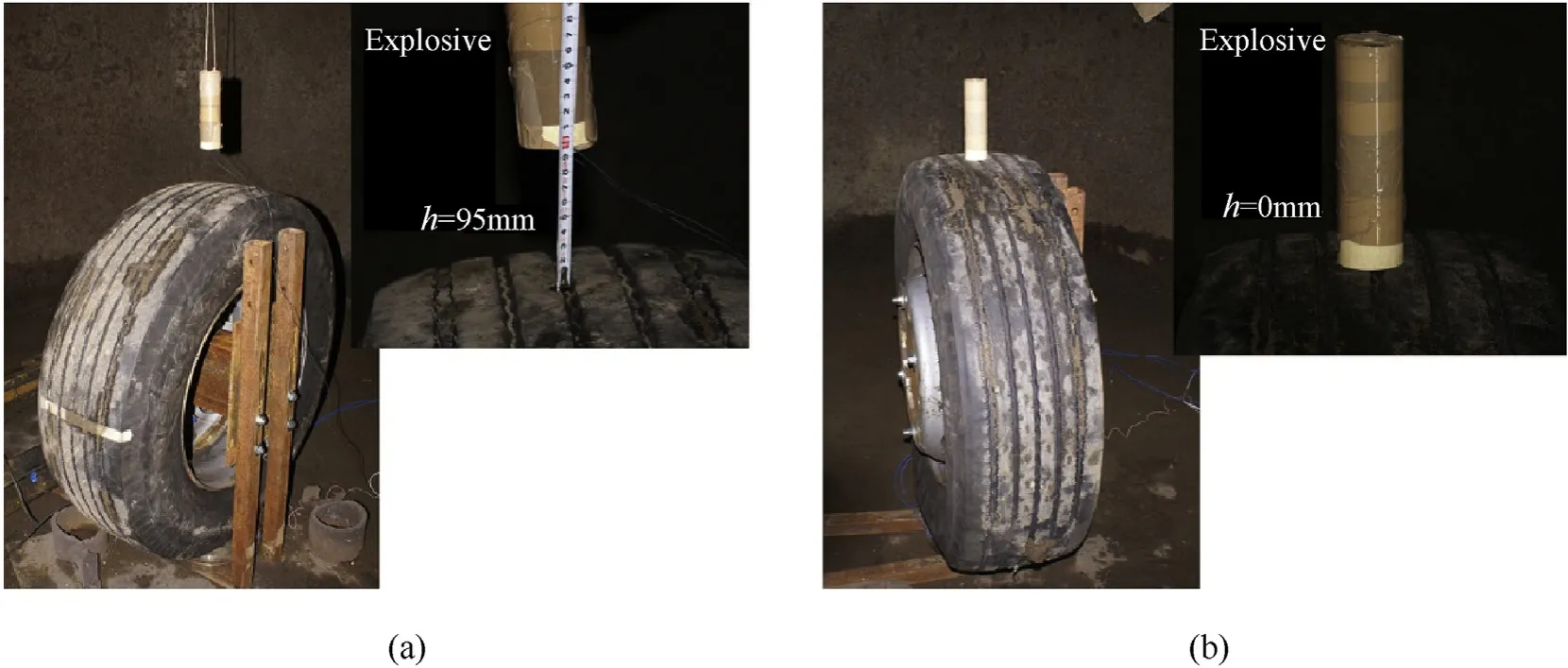
Fig. 2. Experimental blast loading tests: a) test 1: HE located 95 mm above tire surface, b) test 2: HE directly on the tire surface [26].
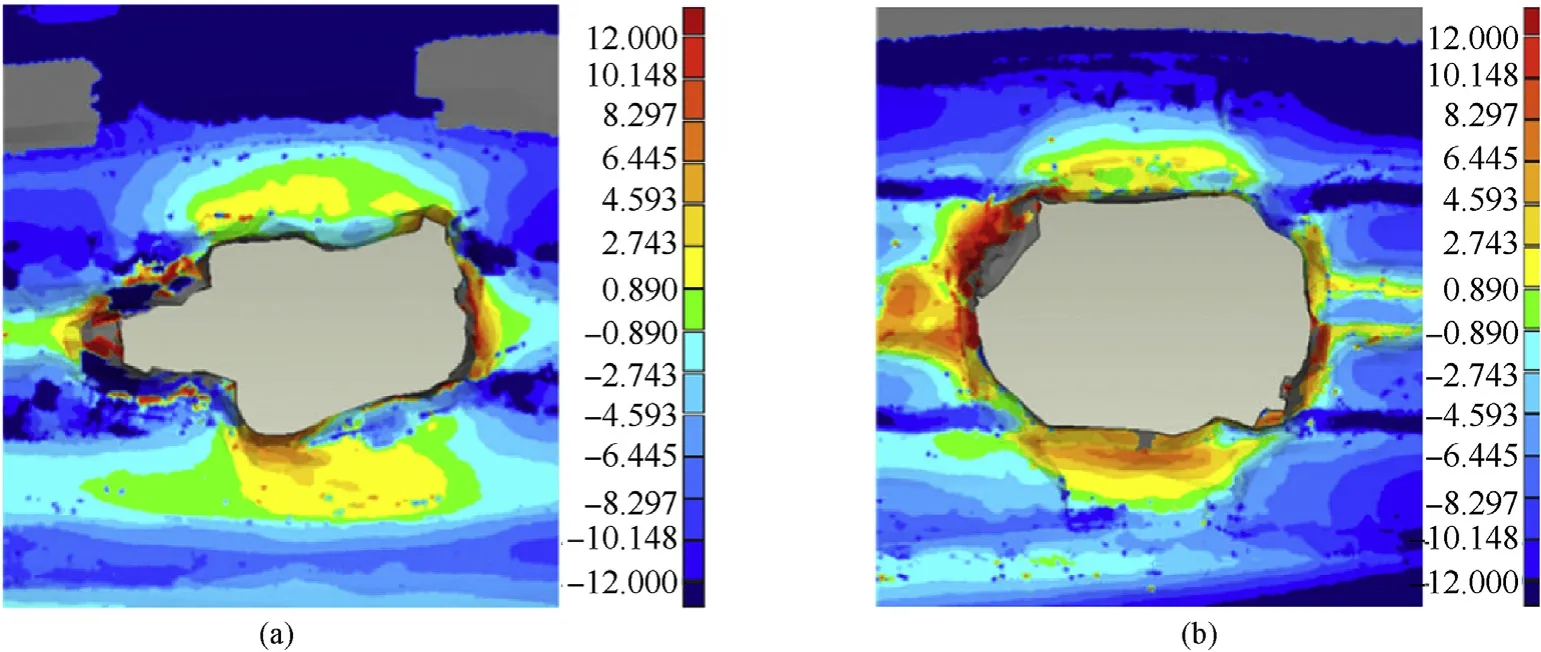
Fig. 3. Tread damage experimental and FEA comparison, a) test 1, b) test 2 [26].
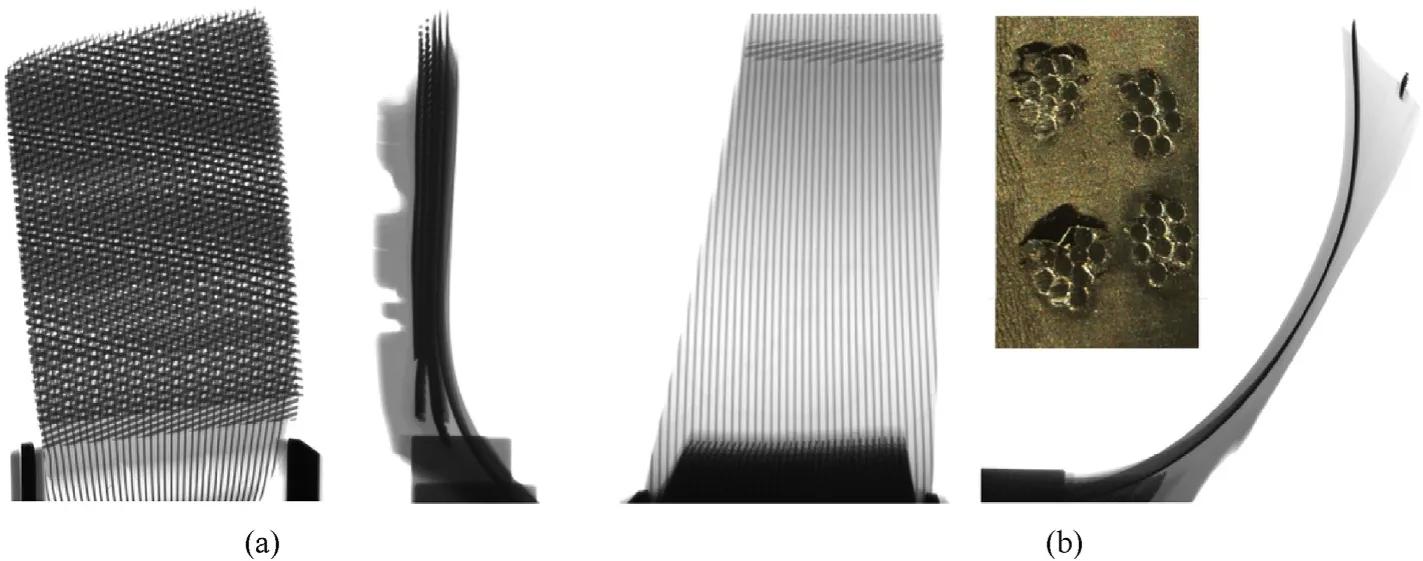
Fig. 4. CT scan of a) tread and b) sidewall with visible cords layers arrangement (additional photo of cords size in microscope scale) [26].
The explosive charge (HE) with cylindrical shape (50 mm diameter and 159 mm height) and a mass equivalent to 0.5 kg of TNT was used in two different experimental tests. Such HE was selected in order to easily test a tire under strongly dynamic conditions and to analyze rubber behavior under high-strain rates. In test 1 HE was 95 mm above the tire surface with tire inflation pressure of 0.60 MPa (Fig. 2(a)). Test 2 considered HE placed directly on the tire surface(close range explosion with a larger local damage) without internal tire pressure (Fig. 2(b)). Numerical simulations with correspondent initial boundary conditions were performed using LS-DYNA code with an implementation of Multi-Material Arbitrary Lagrangian-Eulerian (MM-ALE) formulation with Jones-Wilkins-Lee (JWL) equation for defining HE [25,27,28].
During the experimental tests as well as numerical simulations a significant damage of the tire was obtained. Using the 3D laser scanner system,the geometry of the actual tire after experimental tests was measured.It was compared with discrete representation of the tire (Fig. 3). It was shown that the damage of the tread is similar and discrepancies between the results are relatively small.
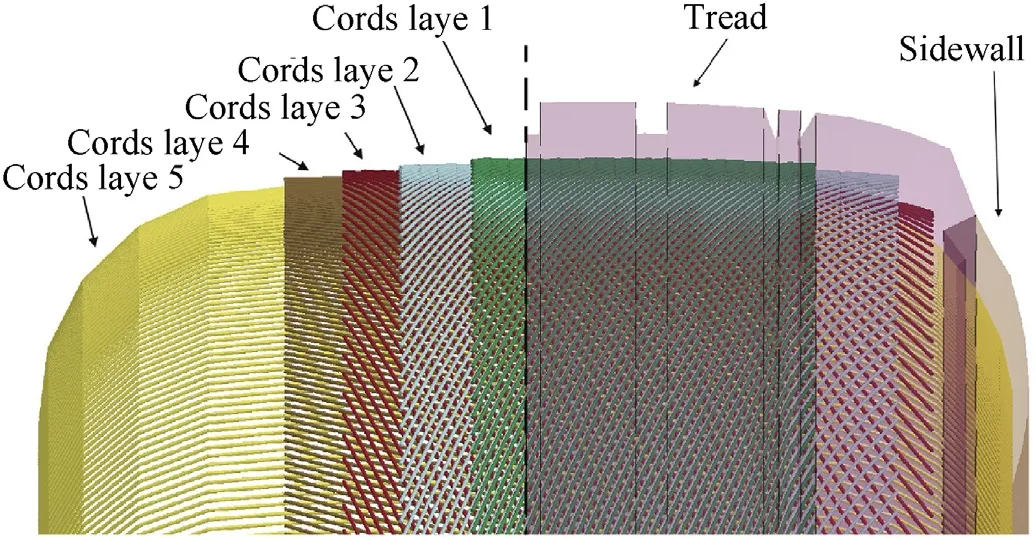
Fig. 5. Cords layers width and placement within the tread and sidewall [17,26].
The results indicated that there is a room for tire strength improvement.Thus,the authors took an advantage of optimization algorithms coupled with computational mechanics in analyses of the vehicle tire.
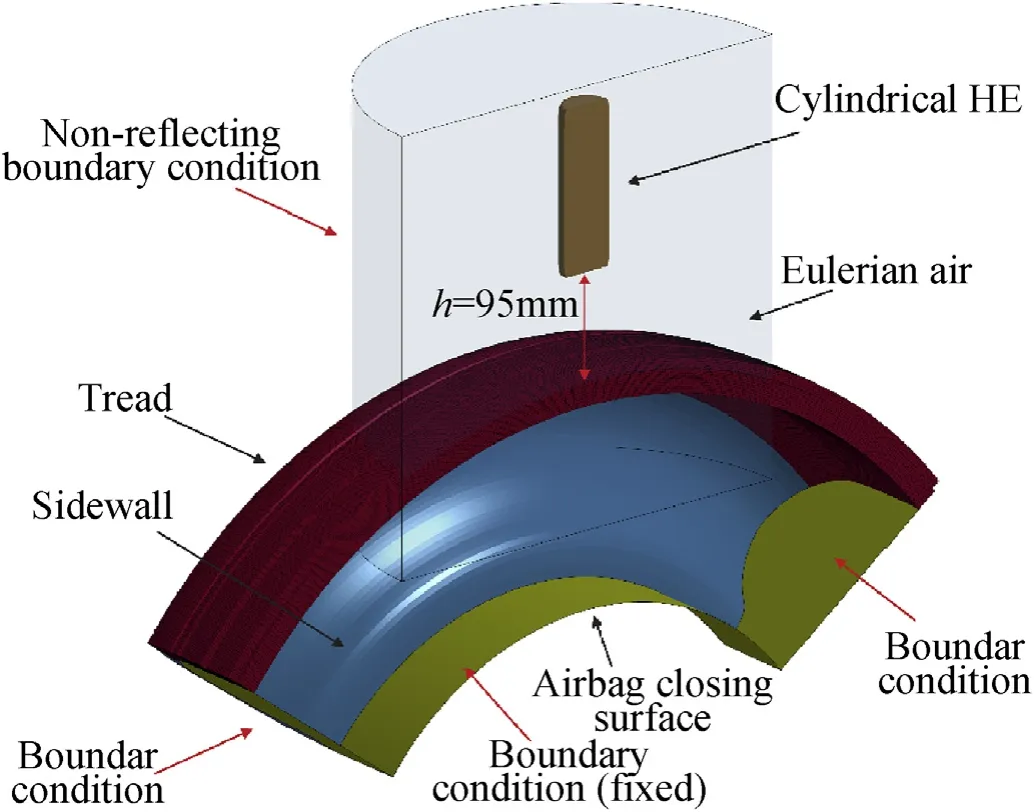
Fig. 6. Tire partly embedded in Eulerian air domain.
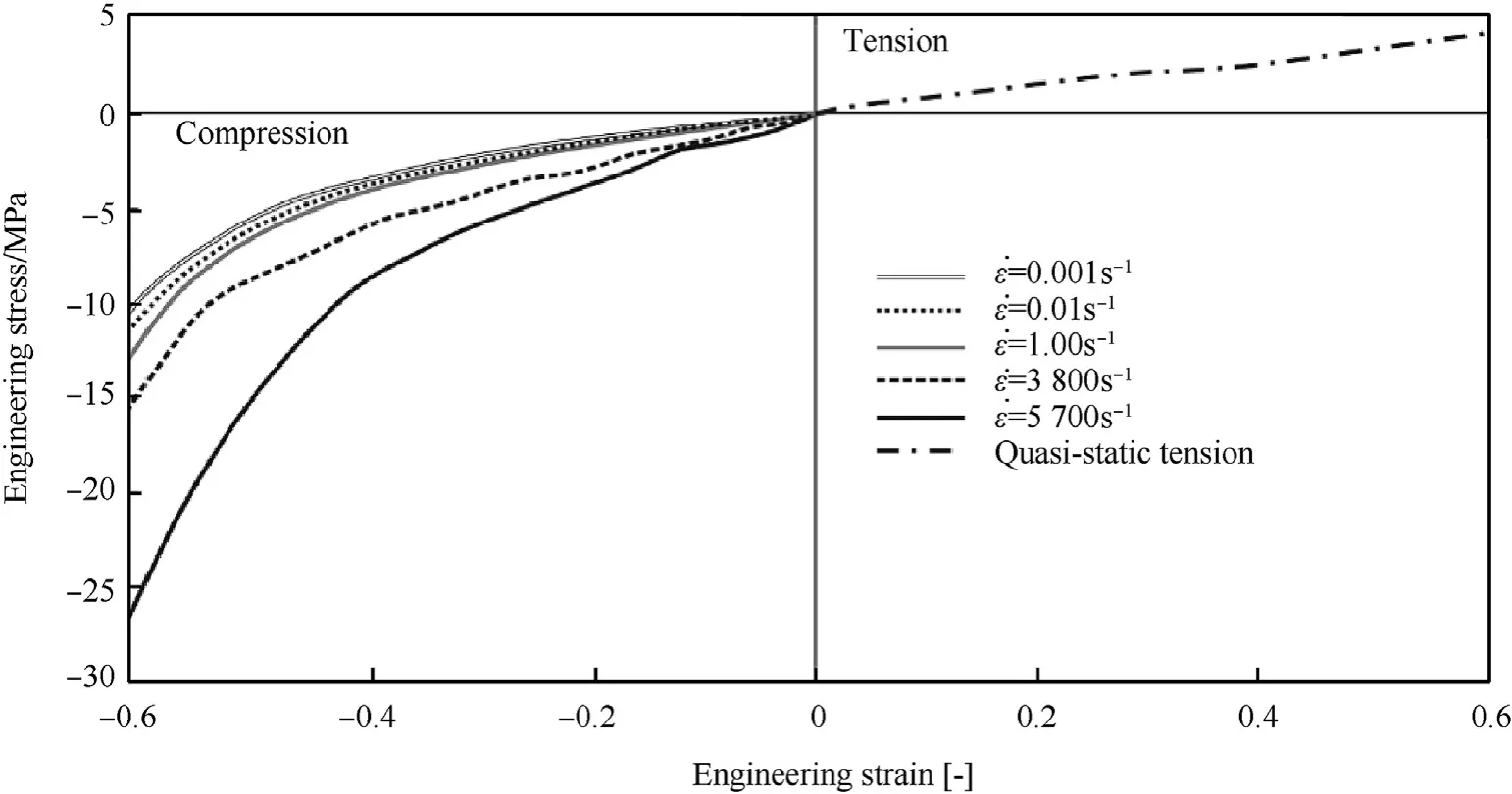
Fig. 7. Mechanical characteristics obtained from experimental tests.
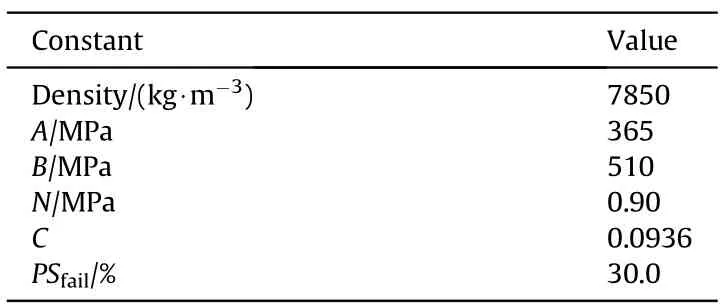
Table 1 Steel parameters for the simplified JC model used in analyses [26,36].
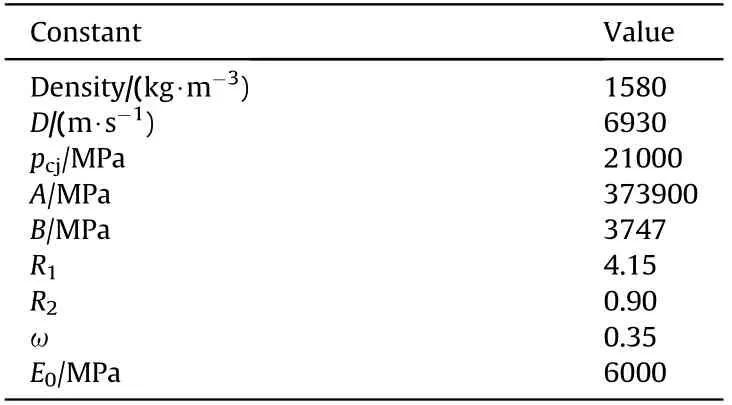
Table 2 TNT parameters for the HE material and JWL equation of state[36].

Table 3 Optimization variables used in the study.
3. Model description
3.1. Tire numerical modelling
In the paper,the developed,verified and validated FE model of a Michelin 315/70 R22.5 tire was used. A detailed description of adopted modelling techniques, material data and a validation procedure can be found in authors'previous papers[17,26].One of the crucial elements of the finite modelling was to verify tire cords arrangement and their size.By using a CT scanning technique and a microscope it was observed that a single cord consists of 9 smaller wires, with a total average diameter of 1.20 mm (Fig. 4). The steel cords are arranged radially inside the tire sidewall (Fig. 4(a)),whereas within the tread area,4 layers are placed circumferentially under different angles (Fig. 4(b)).
Brick elements were adopted (constant stress solid elements)for modelling of the tire,whereas cable(truss)elements were used for representing the steel cords [27]. Their nodes were separated from the brick elements nodes which was possible by using the special feature[29]based on the penalty method.Such a method is original and different than those found in literature[13,14,30,31].In Fig. 5 the FE model of the tire is presented where different width and angle of each cord layer can be distinguished.The airbag model was adopted for representing the pressure inside [29].
3.2. Blast loading modelling
In order to carry out an optimization procedure,it is required to analyze a very large number of FE models with different design variables.Results obtained from the analyses using these FE models can be used for developing a metamodel(response surface).Such a model describes an influence of design variables on objective function and can be used for selecting the best variable set[2].The large number of FE models is also required in applying the Direct Genetic Algorithm optimization, which in fact was used in the presented study.This requires many simulations.Therefore,the FE model needs to be relatively simple to minimize computational time and,on the other hand,accurate enough to represent a trend of objective function change.Based on the authors'studies[17,26]it was decided to modify the adopted “global” FE model of the tire with Eulerian air domain, where mainly local effects were observed. To simplify the model a slice of the tire was considered,the Eulerian domain was reduced, and the following components were removed: fabric surface for airbag, support stand elements,rigid wall and rim. An additional closing surface for the airbag modelled with the use of the Lagrangian Belytschko-Tsay(BT)shell elements was added. The ambient domain was replaced with a non-reflecting boundary condition to prevent artificial stress wave reflections generated at the model boundaries. For the optimization,only test 1 was considered(described briefly in section 2)with the cylinder-shaped explosive charge(HE)made of 0.5 kg TNT with diameter of 50 mm and height of 159 mm. The HE was placed 95 mm above the tire surface with tire inflation pressure of 0.60 MPa.
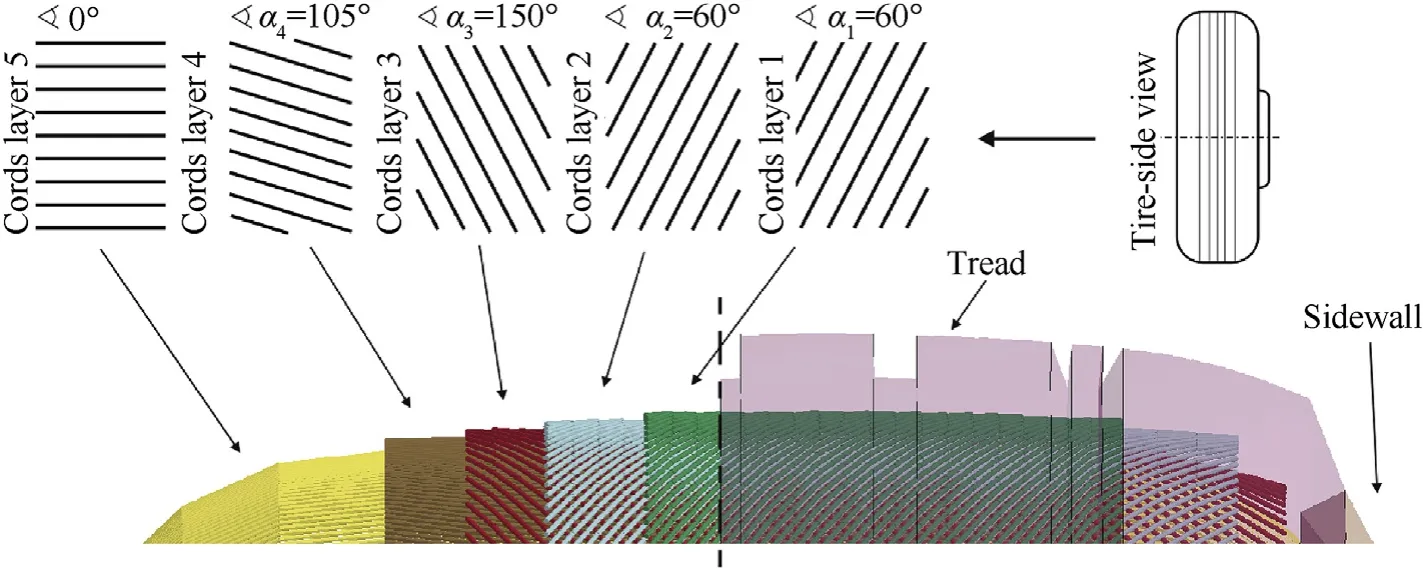
Fig. 8. Cords layers angles in respect to layer of radial cords taken as variables.
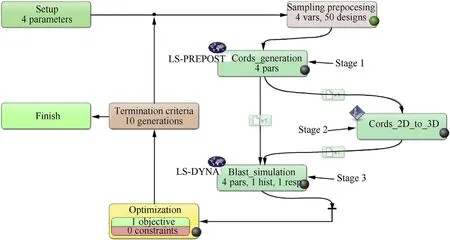
Fig. 9. Computational strategy of the optimization procedure.
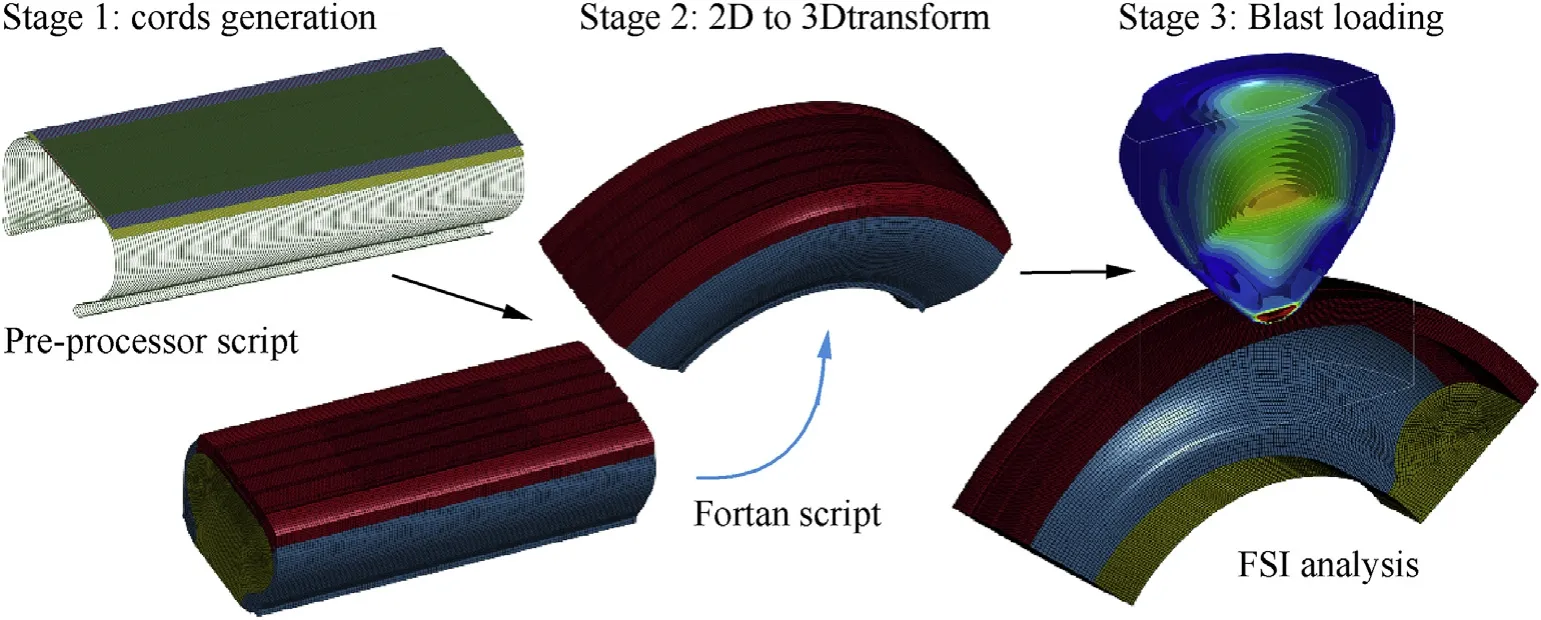
Fig.10. Graphical presentation of three optimization procedures stages.
The procedure of blast loading simulations was the same as for the “global” FE model presented in Refs. [17,26]. The boundary conditions applied to the tire at the bottom airbag surface and displacement in the perpendicular axis to the side airbag surfaces were fixed. The tire was partially embedded in the Eulerian air domain(Fig.6)and the above-mentioned non-reflecting boundary condition was implemented. The air was considered as vacuum.The interaction between the Eulerian blast wave and Lagrangian parts was simulated using the penalty coupling method utilizing the Van Leer's second-order advection theory [29].
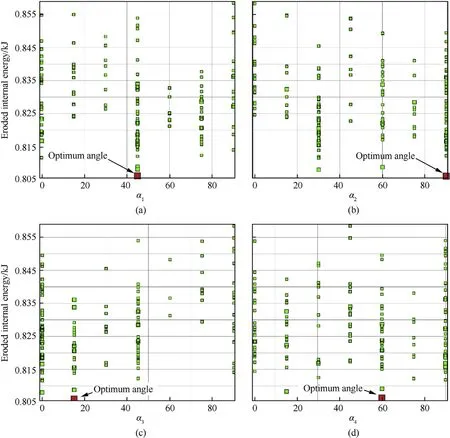
Fig.11. Sampling points results; a) cords layer no.1: α1, b) cords layer no. 2: α2, c) cords layer no. 3: α3, d) cords layer no. 4: α4.
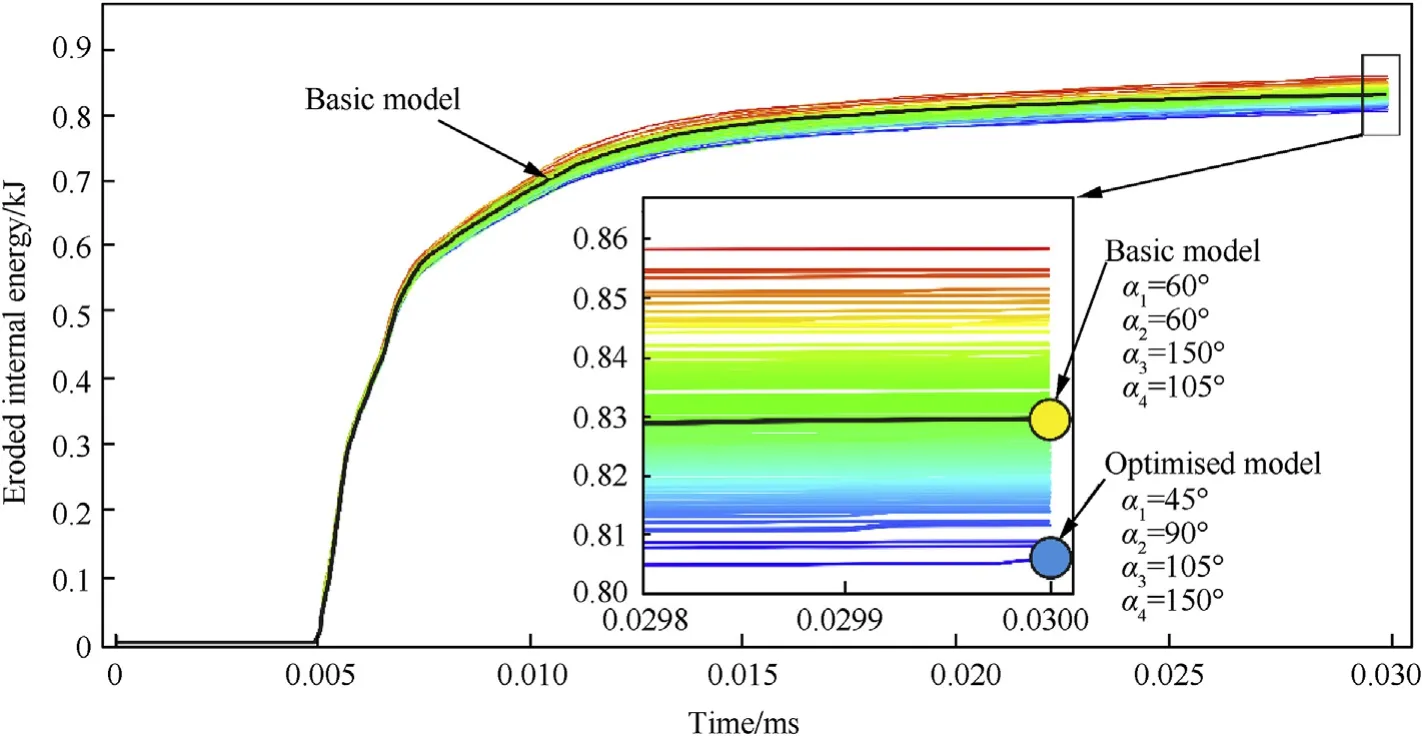
Fig.12. Objective function vs. time histories of all cases (sampling points - all considered cords configurations).

Fig.13. Internal energy history of tire components before and after optimization.
In the presented study the main attention was to conduct very detail studies oriented on the local effects (deformation, failure,blast wave reflection, Fluid Structure Interaction (FSI), etc.).Therefore, within the area of direct interaction between the pressure wave and the tire structure, a very fine mesh was applied(2-3 mm elements in the central area of the model). Based on previous investigations and author's experience the following parameters to prevent leakage in FSI interface were introduced.User defined interface stiffness as relation between pressure and penetration was applied.This linear relation was based on element size(maximum allowable penetration should be lower than edge length of structure elements). Moreover, reflected wave pressure from preliminary analysis (defined maximum interface pressure)should be larger than maximum pressure obtained from analysis.Second very important parameter was minimum volume fraction of detonation products(PD)in Eulerian elements to activate coupling(FRCMIN). It was significantly reduced to 10e-2which drastically minimizes the leakage problem, especially in problems with high velocity fluids impacts. Third parameter taken into consideration was a number of coupling points distributed over each coupled Lagrangian surface segment (NQUAD). It was increased to 3×3 points in order to ensure that minimum two coupling points per each Eulerian element will be generated. This guaranteed that no leakage was observed on the pressure distribution on the tire surface. This also gave the possibility to evaluate more effectively the influence of the cords angle on the tire strength.
3.3. Material description
Simplified Rubber Material (SRM) model was used for the rubber parts [17,26,32,33], where strain rate sensitivity is directly implemented using a stress-strain curves table for different strain rates [33,34]. The mechanical characteristics were obtained from the quasi-static and dynamic tests,which are described in Ref.[35](Fig. 7). The erosion in the rubber parts was simulated using a failure criterion based on the fracture strain value taken from the experimental tension test.
For the cords elements the simplified Johnson-Cook (JC) model with isotropic hardening and strain rate effects was applied with the material parameters taken from Refs.[26,36](Table 1).The HE material as well as the detonation process was simulated using an“explosive burn” material model with (JWL) equation of state.The parameters for the TNT were obtained from analytical calculations supplemented with literature data [36] (Table 2). For a detailed description of material data please see authors other papers[17,26,35].
4. Optimization procedure
4.1. Procedure definition
The main goal of the study is to increase strength and resistance of the tire loaded with blast wave. In order to achieve this goal a method of tire structure optimization subjected to blast loading based on computational mechanics was implemented. The optimization procedure was based on genetic algorithms[37]with 50 populations and 10 generations.The optimization objective was to minimize the tire damage, which from the FE analyses point of view is represented by the eroding internal energy. In each numerical simulation a value of the eroding internal energy at t=0.3 ms was taken as optimization objective.It was observed that after this time the tire damage did not increase. Therefore, it was taken as termination time in each simulation. The problem can be described by the following equation:

where:mindobjectiveis tire tread eroding internal energy;α1,α2,α3,α4is angle of corresponded cords layers (Table 3).
At the first stage,the angle of the circumferential cords(Table 3)in each layer with respect to wheel axis were considered as the variable (Fig. 8). For this purpose, a pre-processor script was developed in order to easily modify the 2D FE model which could be automatically generated depending on the angles used.Despite different angles of the cords in each case,the width of layers as well as the distance between them was the same.The 2D FE model was developed using a cross section of the tire which was dragged in one direction.Thanks to such an approach,generation procedure of each cords layer with different angle was easier than in case of the 3D FE model.In the second stage,generated 2D FE model with a set of applied variables was transformed into the 3D FE model using Fortran script.Therefore,the 2D FE model was curved to represent a slice of the tire. At the last stage, Eulerian domain was added to the curved 3D FE model and the simulation of tire inflation followed by the blast wave interaction with the tire was carried out.The computational strategy is presented in Fig. 9, whereas the multistage optimization procedure is graphically presented in Fig.10.
5. Optimization results and discussion
The optimization procedure optimum case was found after analyzing 5 generation and 150 sampling points. In Fig. 11 all sampling points for each variable are presented. The optimum angles are also highlighted for which the minimum objective value(eroding internal energy) was obtained at t=0.3 ms. It can be noticed that the optimum variables are as follows:α1=45°,α2=90°,α3= 105°,α4= 150°. This is reflected in Fig. 12 where historical data of eroding internal energy of the tire for all sampling points (all considered cords configurations) is presented. Additionally, an area within the termination time t=0.3 ms was enlarged for a better presentation of the results. The final point of each curve corresponds to the objective value that was checked during optimization.The minimum value of the objective function reached 0.806 kJ, whereas in the basic model this value was 0.829 kJ.
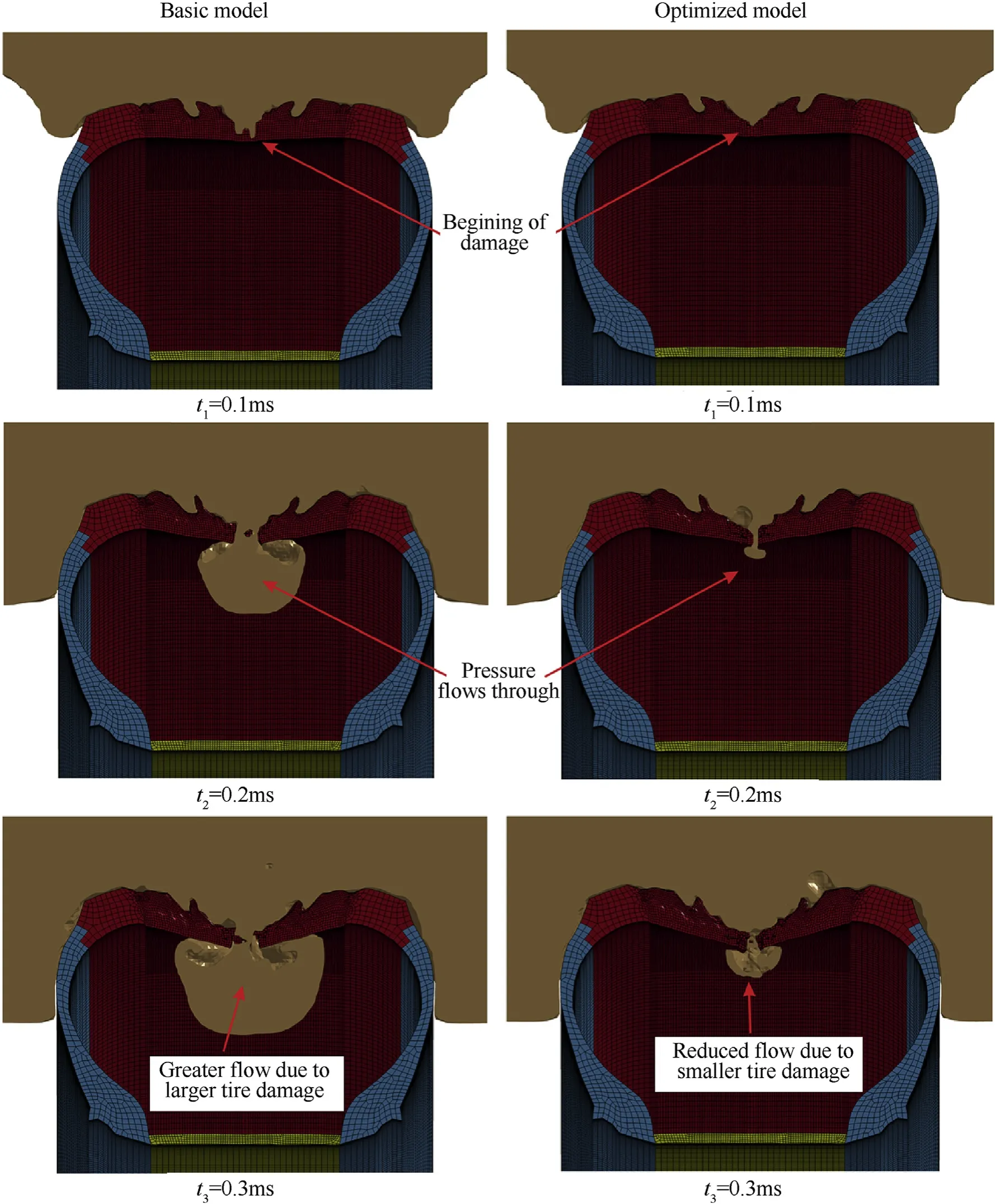
Fig.14. Blast wave with tire interaction comparison in selected time frames.
The influence of cords arrangement had a direct impact on the amount of the energy that the tire absorbs.In Fig.13 internal energy absorbed by the tire components is presented for the basic tire model and the optimized model. Internal energy is calculated incrementally (for each element) based on the six components of stress and strain tensorial values. Bigger tire deformation and consequently greater strains in the basic model, resulted in a greater number of eroded elements in the model. In this case the cords absorbed smaller amount of energy. An inverse relationship can be noticed for the optimized model: internal energy of tread and sidewall was smaller, whereas for the cords it was larger.
For a better presentation of the described phenomena,the blast wave distribution within the Eulerian domain for both the basic and the optimized tire model is shown in Fig. 14 for three time frames.It can be noticed that at the initial stage the characteristic of tire damage is different and larger damage was obtained in the basic tire model. At t2=0.2 ms blast, pressure flows throughgenerated hole, thus the greater flow is also clearly visible in the model before optimization.Due to an increased strength of the tire a significantly reduced flow is evident in the optimized model at t3=0.3 ms. Comparison of the optimized and basic models is presented in Table 4 where objective function is compared as well as internal energy values of tread,sidewall and cords at t=0.3 ms are listed.Despite a relatively small influence of the angles of cords on the objective function(~3%) the optimum configuration decreased the amount of consumed energy by tread and sidewall up to approximately 10%. Moreover, maximum differences between the objective function values are 6.4%(see Fig.12).It shows a tendency of tire modification which can ultimately lead to a military tire which will be resistant to local damage and consequently will increase safety of a vehicle.

Table 4 Optimization results comparison.
6. Conclusions
A tire is a part which is directly exposed to the blast wave,which comes from a detonation of HE under a vehicle.After the blast wave interaction with the wheel(tire),the reflected wave propagates and starts to interact with other LAV mechanical parts. Therefore, to precisely predict effects of IED explosion under armored vehicles a detailed modelling of the tire is very important. In this paper the authors demonstrate capabilities of numerical optimization based on computational mechanics to increase strength and resistance of tire structure loaded with blast wave. The optimization was based on the simplified FE model of the tire with Eulerian air. The FE model which was used in the study was based on the verified and validated tire, which was investigated in the previous authors'studies [17,26].
Based on the above-mentioned papers but also on the presented study it was found that the tire FE model with SRM constitutive model can be used and is adequate for simulating the strongly dynamic problems.Additionally,the implemented failure criterion based on the strain value allowed simulating of erosion in the rubber parts with overall reasonable reliability. Moreover, the method used for representing the cords inside tire tread and sidewall is novel and original. The main advantage of such an approach is that the cords nodes can be separated from the brick elements of tread and sidewall.This enables accurate modelling of tire without the need to coincide the nodes of cords and tire elements. Based on this approach it was possible to analyze the influence of the cords angle in each layer and to implement a preprocessor script to easily modify and automatically generate the FE model depending on the optimization variables.
As a results of the optimization investigations dynamic response of the tire structure subjected to the blast wave in different cases was analyzed. From the optimization procedure, 5 generation and 150 sampling points were obtained within which the optimum case was found. The tire after optimization contains cords layers with the following cords angles: α1= 45°,α2= 90°,α3= 105°,α4=150°. Obtained results showed that application of the optimized cords angles configuration reduces the tire damage and increases the blast resistance.
The presented optimization methodology has proved its effectiveness and that it can be applied for modifying and analyzing the tire structure. Proposed FE tire model representation with cords coupled with tread and sidewall, gives the possibility to apply the pre-processor script, which greatly facilitates the generation of many models needed for optimization. Authors are aware of the fact, that in the optimum model the observed damage (erosion of the finite elements)was approximately 3%higher than in the basic model.However,in the study only cords angles were modified,and the authors' intention was to present the possibilities of optimization procedure implementation for tire structure. Other studies,i.e.[38]show that there is still a room for improving the strength of tire which is locally damaged by blast wave or gunshot puncturing.The presented paper shows a possible direction of tire modification which consequently will increase safety of a vehicle. In future studies the investigations will be continued using cords configurations with different materials, thickness, etc. Hopefully, an optimum cords arrangement and properties will be obtained which will result in significant reduction of the damage or in complete prevention of tire rupture. However, the new cords configuration needs to be verified in tire operating conditions and only after obtaining positive results it can be considered as ready for implementation in a military vehicle.
Acknowledgments
The research was carried out under a research grant no. RMN 723 and the support of the Interdisciplinary Centre for Mathematical and Computational Modelling (ICM) University of Warsaw under grant no GB73-19. This support is gratefully acknowledged.
杂志排行
Defence Technology的其它文章
- Statistical variability and fragility assessment of ballistic perforation of steel plates for 7.62 mm AP ammunition
- Texture evaluation in AZ31/AZ31 multilayer and AZ31/AA5068 laminar composite during accumulative roll bonding
- Research and development of training pistols for laser shooting simulation system
- Summed volume region selection based three-dimensional automatic target recognition for airborne LIDAR
- A novel noise reduction technique for underwater acoustic signals based on complete ensemble empirical mode decomposition with adaptive noise, minimum mean square variance criterion and least mean square adaptive filter
- Research on extraction and reproduction of deformation camouflage spot based on generative adversarial network model
